What is behavior? Merriam-Webster Dictionary defines behavior as A: the manner of conducting oneself, B: anything that an organism does involving action and response stimulation, C: the response of an individual, group, or species to its environment.
In today’s post we are breaking down the definition of behavior into simpler terms. On the surface, behavior seems like a very self-explanatory concept. Once you dive deeper into defining behavior, you realize that there are many different factors that go into behavior, such as actions leading up to the behavior and consequences following the behavior. ABA, breaks down behavior into the following parts and identifies and analyzes Antecedent-Behavior-Consequence, or ABC, data. Today, we’re just going to go into the definition of behavior and how it connects to ABA. Let’s get to it!
A: ANTECEDENT – The manner of conducting oneself
The first part of the definition is pretty general and easy to explain. Looking at the way people conduct themselves is observable, whether you are a behavior analyst or people watching at the coffee shop. Everyone is able to look at how someone conducts themselves in certain situations and read into it. When you see people being rude to the barista in the coffee shop, you may infer that they’re in a rush or that they’re just plain rude. Behavior analysts have to go beyond this initial inference and dig deeper into the function of behavior. Why is he being rude to the barista? Chances are a behavior analyst can find out for you!
B: BEHAVIOR – Anything an organism does
Again, this part of the definition of behavior is observable and easy to explain. Within ABA, we observe clients as part of the Functional Behavior Analysis (FBA) to see what they do in certain scenarios. We typically try to observe them at home, in school, in the community and at work when applicable. We observe and note how they conduct themselves in these scenarios and if problem behaviors arise in one situation versus another. We then look at, you guessed it, WHY the client behaves a certain way, WHY a client hits his mom at home, WHY a client yells out in class.
C: CONSEQUENCE – The response to the environment
This part is often the most forgotten part of the definition of behavior because it is overlooked. A consequence comes as a response to a behavior, and oftentimes, the behavior itself is the only thing addressed in the situation. People often fail to ask WHY someone did something. Instead of trying to understand the reasoning behind a behavior, we automatically address the action itself. The “why” aspect is crucial to successful behavior change when using a behavior analytic lens. A huge part of the initial Functional Behavior Assessment, FBA is determining what purpose a behavior serves for the person. In other words, why does Johnny hit his mom? After the FBA, we can see that Johnny hits his mom when she turns away from him to attend to another task. After a few different observations and watching for specific patterns, we now know that Johnny isn’t trying to hurt his mom, he is just trying to get her attention. From there, we would teach Johnny alternative ways to get mom’s attention.
A common theme here is WHY. Behavior analysts are constantly asking why someone behaves a certain way so that they can write behavior plans and direct therapy accordingly. So, next time you’re out and about, try to remember to ask yourself why someone is acting a certain way and remember that we don’t always know why. Thanks for reading everyone, stay tuned for more posts like this one!
